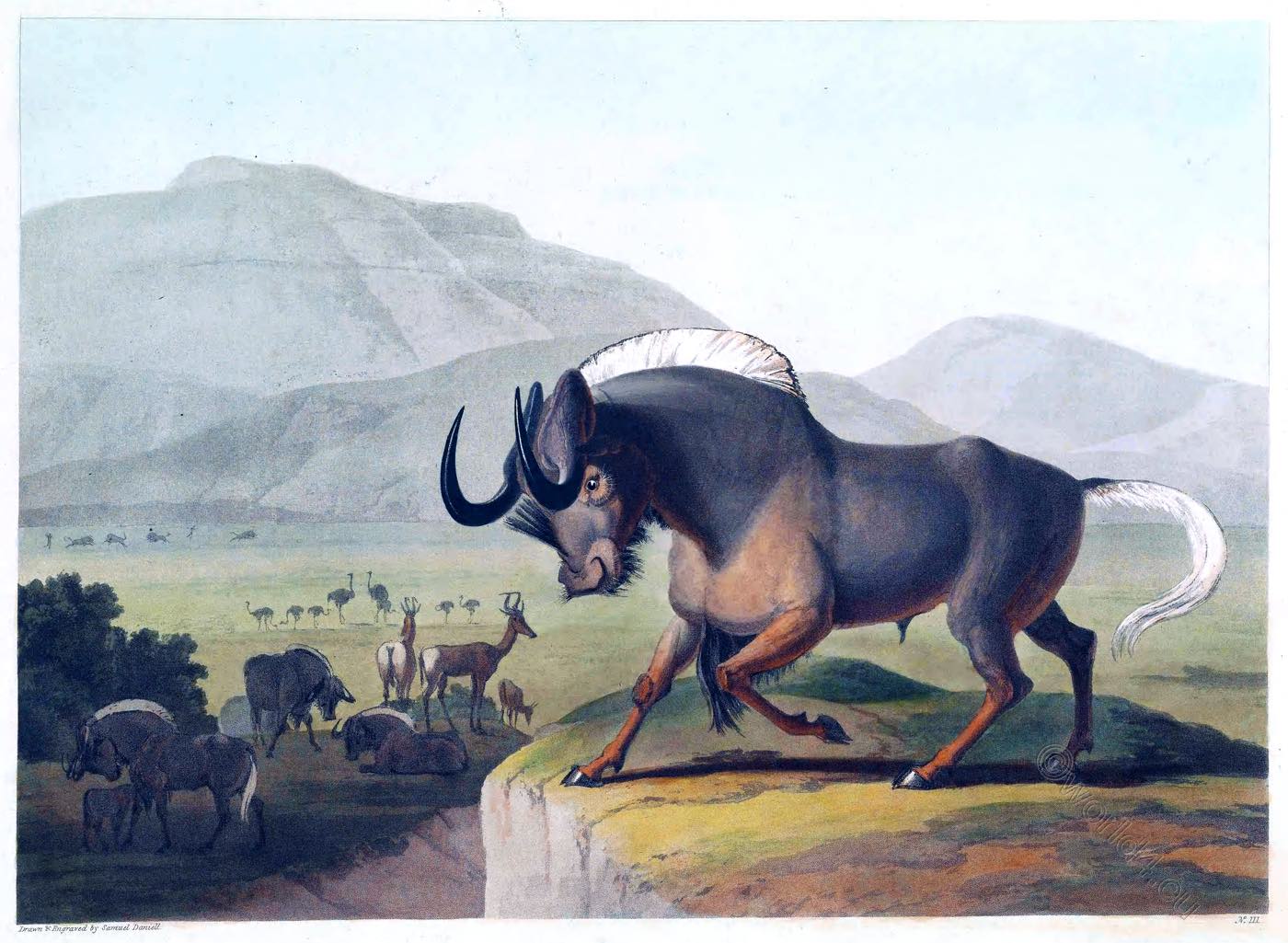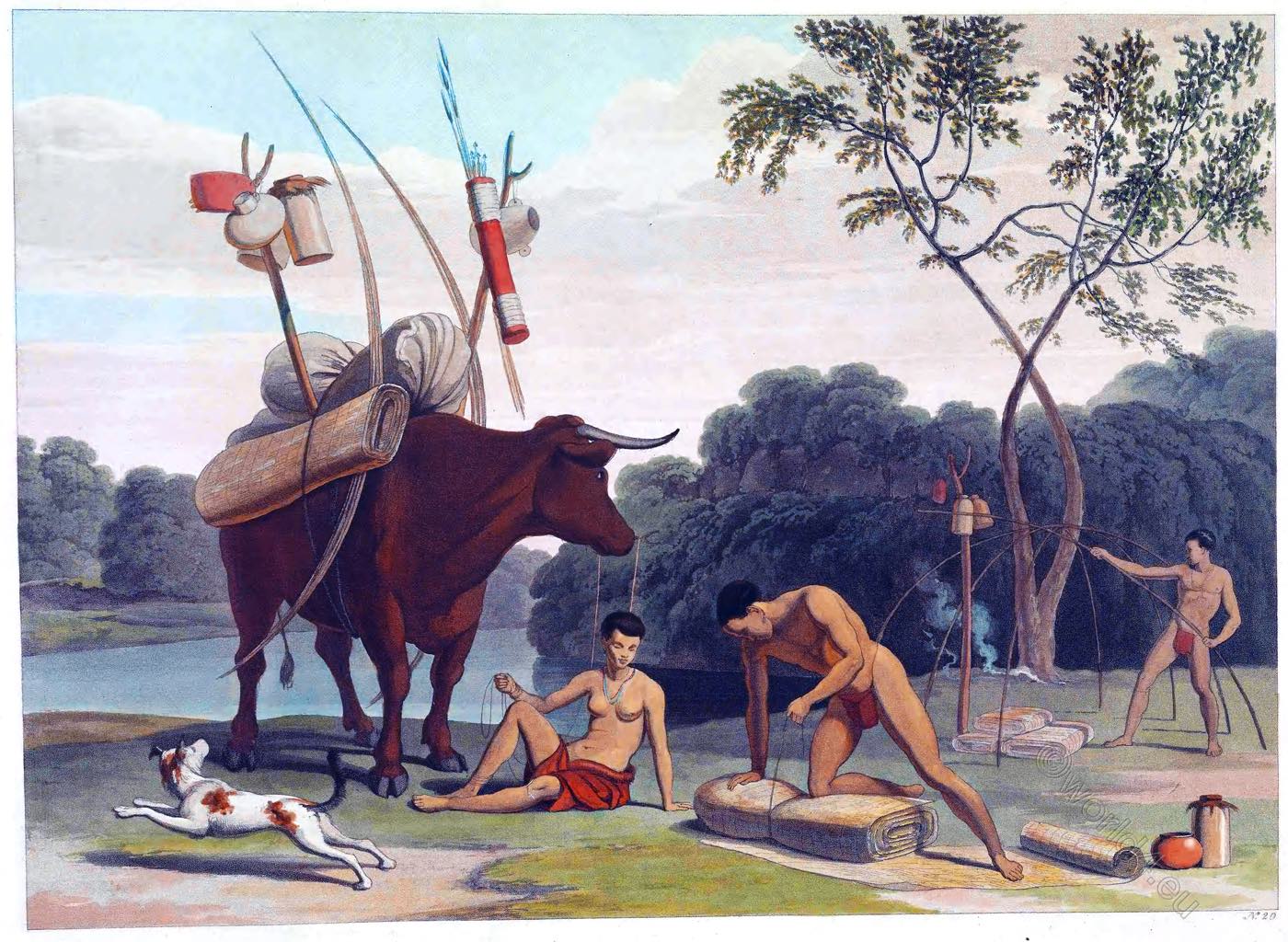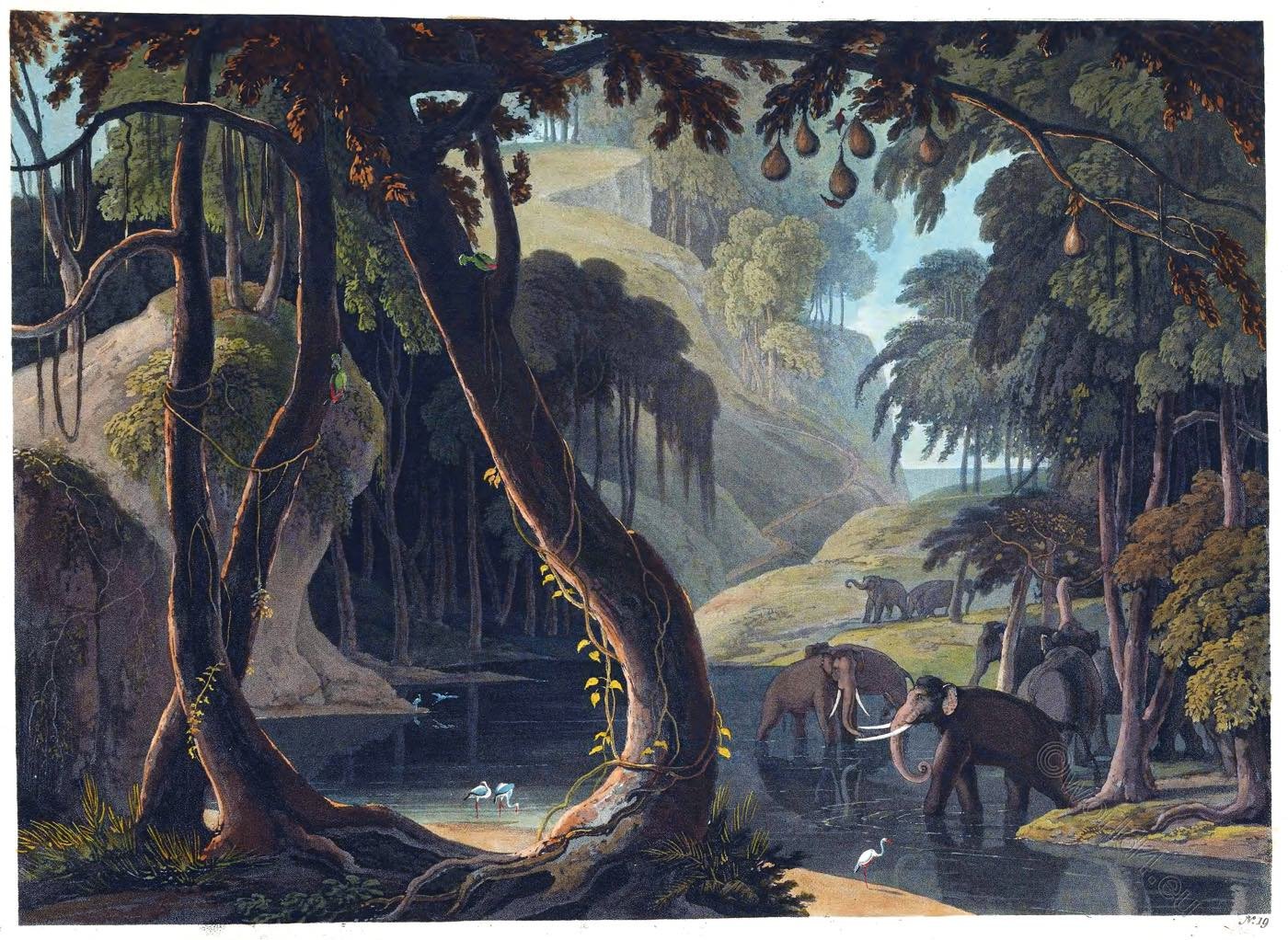Wildebeest, also called the gnu, are a genus of African antelopes, which live in large herds and belong to the species of hartebeests of even-toed ungulate in the family Bovidae.

THE GNOO.
NATURALISTS having observed that the greater part, though not all, of the Antelope tribe, had a gland under the interior angle of the eye, which they call the subocular sinus, agreed to consider it as a characteristic of the genus; and the animal, of which the annexed is an accurate representation, being found to possess such gland, has accordingly been elassed among the Antelopes. A common observer would consider it rather as belonging to the Bovine tribe. In fact it seems to be of a mixed nature, made up of the bull, the horse, and the antelope.
The Gnoo is the Hottentot *) name. Of all the animals that scour the plains of southern Africa the Gnoo is the swiftest, and from its fierce and restless disposition, the Dutch colonists have given it the name of Wildebeest. In order to convey some idea of its extraordinary celerity, it may be noticed, that the .individual, from which the annexed drawing was made, had one of its fore legs completely broken above the knee joint by a musket ball, yet, although pursued on horseback in full speed, it was a considerable time before it could be overtaken, in which situation he turned, and became so furious, as to be dangerous to come near him. When a herd is disturbed, they invariably begin to sport and bound, and butt each other for some time before they gallop off.
Their action on such occasions is so free, various, and elegant, that all the other wild animals, even the leaping Spring-Bole, may be called clumsy and awkward, when compared with the Gnoo. The usual height of this animal is three feet eight inches, and its length five feet eight inches. They are commonly seen in herds from fifty to an hundred, though not infrequently found feeding with Hartebeests, Ostriches, Quachas, and Elands. They are seldom shot by the Colonists on account of their swiftness; but the native Hottentots, with great patience and perseverance, creep among the low bushes till they get near enough to wound them with their poisoned arrows.
A more particular description of this extraordinary creature may be found in Barrow’s Travels in Southern Africa.
Source: African scenery and animals by Samuel Daniell, William Daniell, Thoma Dowdeswell. London 1804.
*) Hottentot was a collective term first used by the Boers in colonial times for the Khoikhoi family of peoples living in today’s South Africa and Namibia, to which the Nama, the Korana and Griqua (Orlam and Baster) belonged. It is now assumed that the Dutch term Hottentot has been used mainly in a derogatory, racist and discriminatory manner since its introduction. Moreover, the English word Hottentots has been applied to people with a supposedly inferior culture and lack of intellectual ability.


